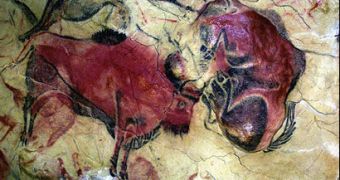In a recent research, scientists used comparisons between ratios of thorium and titanium in the layers of cave paintings, thus calculating the age of each layer. This proved that some of the paintings were completed after even 20,000 years since they were begun.
Previous beliefs had it that the cave painting process was a short single-session one, but archaeologists discovered that, instead, it was carried out during hundreds of generations, through constant refreshing, improving and new additions. Up until now, dating the numerous cave art examples found all across Europe was hard to accomplish, but a recent technique allowed for a more accurate estimation. This will provide new insight on the cultural traits of the early humans that traveled throughout the continent, moving from south to north about 40,000 years ago, during the Ice Age.
Dr. Alistair Pike, the archaeologist from Bristol University who conducted the research, stated, “The art gives us a really intimate window into the minds of the individuals who produced them, but what we don't know is exactly which individuals they were as we don't know exactly when the art was created. If we can date the art then we can relate that to the artifacts we find in the ground and start to link the symbolic thoughts of these individuals to where, when and how they were living.”
The regular dating process involved carbon measurements of the age of the charcoal used in the painting process, but it only estimated when it was produced, not when it was actually used. “When you go into these caves today there is still charcoal lying on the ground, so the artists at the time could have been using old charcoal rather than making it fresh themselves,” says Dr. Pike. “If this was the case, then the date for the painting would be very wrong. Taking samples for carbon dating also means destroying a bit of these precious paintings because you need to take away a bit of the pigment. For carvings, it is virtually impossible to date as there is no organic pigment containing carbon at all.”
Using the old technique, the researchers dated the paintings on the walls of the “Sistine Chapel of the Paleolithic,” the Altamira cave close to Santillana del Mar in northern Spain some 14,000 years ago. But using the uranium series dating technique allowed Dr. Pike's team to gather more accurate data, and as such, they discovered portions of the art that were 25,000 to 35,000 years old, while the most recent were only 11,000 years of age. Applying the same technology on the engravings from the Cresswell Crags in Derbyshire, Britain's only cave art specimens, the experts found them to be 12,000 years old. Further analysis, together with applying the recent technique to other examples of Paleolithic art, may provide more knowledge on the way the early humans reasoned, behaved and interacted socially.

 14 DAY TRIAL //
14 DAY TRIAL //